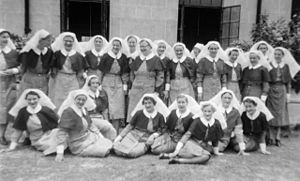Bangka Island massacre facts for kids
The Bangka Island massacre was a terrible event that happened during World War II. It took place on 16 February 1942, on Bangka Island, which is east of Sumatra in Indonesia. During this event, Japanese soldiers killed 22 Australian Army nurses. They also killed 60 Australian and British soldiers and crew members. These people had survived when their ship, the Vyner Brooke, was sunk by Japanese planes. Only a few people survived the massacre itself. These were Sister Lt Vivian Bullwinkel, an American named Eric Germann, and Stoker Ernest Lloyd from the British Navy.
Contents
What Happened on Bangka Island?
The Voyage of the Vyner Brooke
On 12 February 1942, a ship called the Vyner Brooke left Singapore. This was just before the city fell to the Imperial Japanese Army. The ship was carrying many injured soldiers. It also had 65 nurses from the 2/13th Australian General Hospital. There were also civilian men, women, and children on board.
Japanese aircraft bombed the ship. The Vyner Brooke sank. About 100 people who survived the sinking gathered near Radji Beach. This beach was on Bangka Island in what is now Indonesia. Among the survivors were 22 of the original 65 nurses.
A Terrible Day at Radji Beach
The survivors soon found out that the Japanese controlled the island. An officer from the Vyner Brooke went to Muntok to surrender the group. While he was away, the head nurse, Irene Melville Drummond, suggested something. She thought the civilian women and children should leave for Muntok. They did. The nurses stayed behind to care for the wounded soldiers. They even set up a shelter with a big Red Cross sign. This sign showed they were helping injured people.
In the middle of the morning, the ship's officer returned. He was with about 20 Japanese soldiers. The soldiers ordered all the wounded men who could walk to go around a nearby headland.
The Japanese soldiers then lined up these men. Sadly, the men were killed. Only one person, Ernest Lloyd, managed to escape. He realized what was happening and ran into the sea. He lost consciousness but later washed up on another part of the beach.
A Japanese officer then ordered the remaining 22 nurses and one civilian woman to walk into the ocean. A machine gun was set up on the beach. Tragically, all but one nurse, Vivian Bullwinkel, were killed.
Survivors and Their Story
When Ernest Lloyd woke up, he made his way back to where the massacre happened.
When Vivian Bullwinkel woke up, she found Private Patrick Kingsley. He was a wounded British soldier from the ship. He had also survived the massacre. Vivian dressed his wounds and her own. She then met Stoker Lloyd. They all agreed it would be best to surrender. They knew they could not survive much longer in such harsh conditions.
Twelve days later, Vivian Bullwinkel and Patrick Kingsley surrendered to the Japanese. Sadly, Kingsley died before reaching a prisoner-of-war camp. But Vivian Bullwinkel spent three years in a camp. Ernest Lloyd surrendered after them. He also spent the rest of the war as a prisoner. When his camp was freed, he made sure the authorities knew about the surviving nurses. He kept looking for them. This was very important because the Japanese said they knew nothing about the nurses. Their camp was deep in the jungle.
Vivian Bullwinkel survived the war. In 1947, she bravely told her story. She gave evidence about the massacre at a big court case called the International Military Tribunal for the Far East. This court case was held in Tokyo.
Remembering the Heroes
In South Australia, people hold a special event every year. It is called the Bangka Day Memorial Service. It takes place at the Women's Memorial Playing Fields in St Mary's. This service is held on the Sunday closest to 16 February, and it has been happening since 1955. A special plaque was put up there. It remembers the South Australian Army Nursing Sisters who died, including Irene Drummond and six others.


